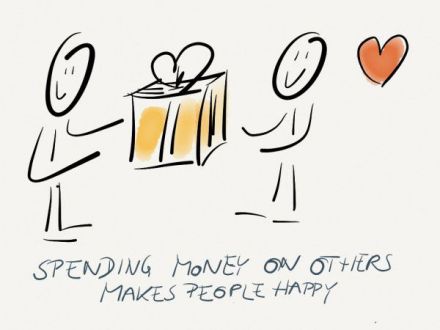This article is intended for people with diabetes who take insulin and monitor their blood sugars frequently with blood glucose tests and/or with continuous glucose monitors. (NOTE: If you’re struggling mentally with the pressure of improving your A1C results, read this article from a physician who realized just how emotional A1C measurements can be for her patients: Ending the A1C Blame Game.)
Your A1c is a simple blood test will tell you an approximation of your blood sugar control for the past 3 months based on the amount of Advanced Glycogenated End-Products (AGEs) that have accumulated in your blood. You can read more about A1Cs here.
 When I was a college student through to my early 20s, my A1C hovered between 6.8 to 7.3, but as I’ve gotten older and become and more and more engrossed in health, nutrition, planning for optimal pregnancy, and overall commitment to my diabetes, I’ve set my sights on reducing my A1C to a level near 6.0 percent. You can read what these percentages translate to in blood glucose levels with this chart to the right. —>
When I was a college student through to my early 20s, my A1C hovered between 6.8 to 7.3, but as I’ve gotten older and become and more and more engrossed in health, nutrition, planning for optimal pregnancy, and overall commitment to my diabetes, I’ve set my sights on reducing my A1C to a level near 6.0 percent. You can read what these percentages translate to in blood glucose levels with this chart to the right. —>
My most recent A1Cs were 6.8, then 6.4, and most recently 5.9. At last, I’ve reached my goal! But this was no accident. In addition to regularly fine-tuning my insulin doses and wearing a CGM, here are 5 things that helped me lower my A1C…that might help you:
- Change what I view in my head as an “okay” blood sugar. For me, I feel this has the biggest part of my progress. It’s easy (and understandable) in type 1 diabetes to see a blood sugar of 145 or 150 mg/dL as a decent blood level to “hang out” at throughout the day. In reality, if this is often your average blood sugar, then your A1C will inevitably be around 7.0 percent. Which is considered healthy for long-term health in diabetes management, certainly, but if I want to see my A1C around 6.0, then allowing my blood sugar to hang out at 150 too often isn’t going to get me there. So I started taking small correction doses if my blood sugar was ever steadily sitting above 135 mg/dL. Now, a blood sugar of 200 mg/dL seems super-high and occur far less often, whereas I used to view that level as only slightly high.
- Get over the fear of hanging out below 100 mg/dl. We all know low blood sugars are rotten and can ruin any good day, but if I want my A1C lower, I need to learn how to feel more comfortable with a blood sugar steadily sitting between 70 and 100 mg/dL. Thanks to a CGM (or 10+ finger sticks per day when I didn’t have a CGM), I make a concerted effort to never treat what I think might be a low until I know for sure. If it’s obvious that I’m dropping quickly, then I’ll treat it, but if I’m simply hanging out below 100 mg/dL I try to be cautious and aware, without over-reacting. *** Please keep in mind that I’m an adult, so expecting a young child or teenager with diabetes to maintain blood sugars safely below 100 mg/dL probably isn’t reasonable or wise! Discuss these standards with your child’s doctor.
- Prevent roller coasters by treating lows very carefully. One of the easiest ways to ruin a string of steady blood sugars during the day is to experience a low and then go hog-wild crazy treating it with way too many carbs. One rule I’m implemented for myself is that I will treat most lows with no more than 8 grams of carbohydrates unless it is clearly a severe low and there is clever a major excess of insulin in my system. For most typical lows, 8 grams is plenty and by limiting myself to those 8 grams, I prevent my blood sugar from bouncing back up above 150 mg/dL an hour later…because like I mentioned earlier, 150 mg/dL is now considered a bit too high if I want an A1C in the 6.0 range.
- Taking my insulin sooner before meals. You know that whole thing about how insulin should be taken 15 minutes before a meal? Well, it really makes a difference…especially for a higher fat or higher carbohydrate meal. Even if I’m just eating a banana and peanut butter, waiting 10 minutes after taking my injection has been monumentally helpful in preventing my blood sugar from even going over 130 mg/dL after a meal! We’re lead to believe that in life with diabetes we can’t prevent highs after meals, that they’ll inevitably go over 160 mg/dL, but with the right dosage you can absolutely prevent those big swings after eating. That being said, there are certainly some dishes (like chinese food) that take so long to digest because of the excess fat, that I actually don’t wait those extra 10 minutes because I’ve found that the insulin starts kicking in around the same time the food is finally being digested. But I would’ve never noticed this had I not paid more attention to my post-meal BGS and the timing of my insulin doses.
- No excuses. Okay, this is key! It’s a constant message in the back of my mind. There are a thousand excuses we can make for ourselves as to why we can’t keep our blood sugars in-range more often, but the truth is that every decision I do or don’t make impacts the results of my A1C. That does not mean I’m going to beat myself up for high blood sugars, but instead, just focus on what I can accomplish if I set my mind to it. Sure, a few aspects of diabetes are out of my control, but a lot of it is absolutely in my control, and I’m not going to make any excuses around that. For instance, I love dessert and still enjoy dessert regularly in moderation, but I’ve pinpointed a few desserts that just aren’t worth it if my biggest goal is getting my A1C down to a 6.0 range. Buttercream frosting and a particular type of gluten-free bread (that tastes delicious) are two examples of foods that I will no longer eat because what they do to my blood sugar just ruins the whole day. As hard as I might try, the intense combo of sugar and fat in that buttercream frosting sends my blood sugar soaring, so rather than say, “Whatevs, I’ll eat it anyway,” I have actively chosen to say “No, thanks,” to that food because my A1C goal is more important to me than frosting.
In the end, I believe in constant observation, constant learning, and always reminding myself that this is a constant work in progress!

















